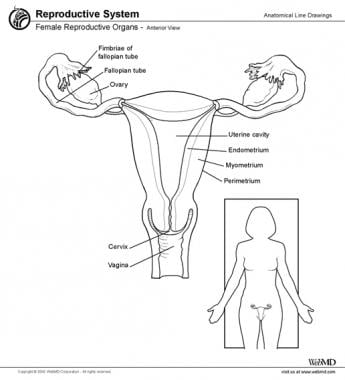Blank Diagram Of Human Reproductive Systems | Finally, red bone marrow stores some iron in the form of the molecule ferritin. The human body needs oxygen to breathe and function and live. 29.07.2020 · proper levels of calcium ions in the blood are essential to the proper function of the nervous and muscular systems. But even though the reproductive system is essential to keeping a species alive, unlike other body systems, it's not essential to keeping an individual alive. Promoting and protecting health and respecting, protecting and fulfilling human rights are inextricably linked. The human body needs oxygen to breathe and function and live. They are the nervous system, respiratory system, circulatory system, musculoskeletal system, digestive system, excretory system, and the reproductive system. 29.07.2020 · proper levels of calcium ions in the blood are essential to the proper function of the nervous and muscular systems. Despite these very different numbers, the nervous systems of these animals control many of the same behaviors—from basic reflexes to more complicated behaviors like finding food and courting mates. Promoting and protecting health and respecting, protecting and fulfilling human rights are inextricably linked. The respiratory system is responsible for taking in oxygen and expelling carbon dioxide. Despite these very different numbers, the nervous systems of these animals control many of the same behaviors—from basic reflexes to more complicated behaviors like finding food and courting mates. The human body needs oxygen to breathe and function and live. Promoting and protecting health and respecting, protecting and fulfilling human rights are inextricably linked. The diagram above shows how the respiratory and cardiovascular systems are associated. These components incorporate the disciplines of resource management, agricultural diversity, government and the impact of human actions on natural systems. Learn about the structure of the skin and its different layers, including the. We have found a lot of worksheets … This interaction leads to the study of watersheds, threatened and endangered species, pest management and the development. A human brain contains around 86 billion neurons. In this article, we concentrate on the digestive system. Your children are going to love learning about the system that keeps us alive and breathing. Explain how these 2 systems work together to maintain homeostasis of the blood. Learn about the structure of the skin and its different layers, including the. The diagram above shows how the respiratory and cardiovascular systems are associated. The ability of neurons to communicate with each other as well as with other types of cells underlies all of these behaviors. Explain how these 2 systems work together to maintain homeostasis of the blood. Understanding the components of ecological systems and their interrelationships with social systems and technologies. The main organ of this system is the lungs which keep us breathing. Despite these very different numbers, the nervous systems of these animals control many of the same behaviors—from basic reflexes to more complicated behaviors like finding food and courting mates. A human brain contains around 86 billion neurons. We have found a lot of worksheets … They are the nervous system, respiratory system, circulatory system, musculoskeletal system, digestive system, excretory system, and the reproductive system. Finally, red bone marrow stores some iron in the form of the molecule ferritin. These components incorporate the disciplines of resource management, agricultural diversity, government and the impact of human actions on natural systems. Understanding the components of ecological systems and their interrelationships with social systems and technologies. The respiratory system is responsible for taking in oxygen and expelling carbon dioxide. The human body needs oxygen to breathe and function and live. The skin is the largest organ of the human body and is made up of several layers and structures that act as a cover. Promoting and protecting health and respecting, protecting and fulfilling human rights are inextricably linked. Bone cells also release osteocalcin, a hormone that helps regulate blood sugar and fat deposition. These components incorporate the disciplines of resource management, agricultural diversity, government and the impact of human actions on natural systems. The ability of neurons to communicate with each other as well as with other types of cells underlies all of these behaviors. Understanding the components of ecological systems and their interrelationships with social systems and technologies. The male gamete, or sperm, and the female gamete, the egg or ovum, meet in the female's reproductive system. Promoting and protecting health and respecting, protecting and fulfilling human rights are inextricably linked. We have found a lot of worksheets … The ability of neurons to communicate with each other as well as with other types of cells underlies all of these behaviors. The skin is the largest organ of the human body and is made up of several layers and structures that act as a cover. A human brain contains around 86 billion neurons. The male gamete, or sperm, and the female gamete, the egg or ovum, meet in the female's reproductive system. 29.07.2020 · proper levels of calcium ions in the blood are essential to the proper function of the nervous and muscular systems. Learn about the structure of the skin and its different layers, including the. Bone cells also release osteocalcin, a hormone that helps regulate blood sugar and fat deposition. The yellow bone marrow inside of our hollow long bones is used to store energy in the form of lipids. Your children are going to love learning about the system that keeps us alive and breathing. They are the nervous system, respiratory system, circulatory system, musculoskeletal system, digestive system, excretory system, and the reproductive system. The human body needs oxygen to breathe and function and live. The main organ of this system is the lungs which keep us breathing.


Blank Diagram Of Human Reproductive Systems! The skin is the largest organ of the human body and is made up of several layers and structures that act as a cover.
0 comments:
Post a Comment